One the many traders encountered at the Knife River villages, free trader René Jusseaume offered his services as an interpreter. He also accompanied Sheheke’s delegation to Washington City and thus traveled with the expedition on the final leg between the Knife River Indian Villages and St. Louis.
Related Pages
October 27, 1804
Ruptáre
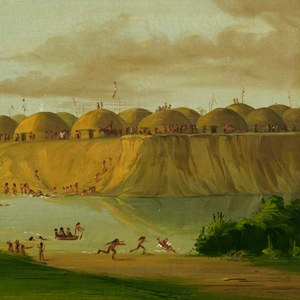

At the second Mandan village—Ruptáre—they hire free trader René Jusseaume as an interpreter. They camp opposite Mahawaha, the Awaxawi Hidatsa village at the mouth of the Knife River.
November 3, 1804
Personnel changes
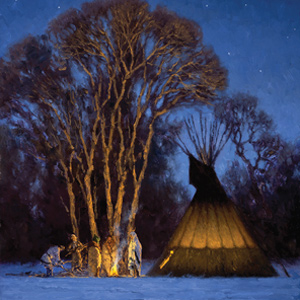

The engagés are discharged, and Lepage and Jusseaume are hired from among the traders at the Knife River Villages. Fort Mandan’s foundation is completed, and a dram of whiskey revives the cold workers.
November 8, 1804
Riving cottonwood logs
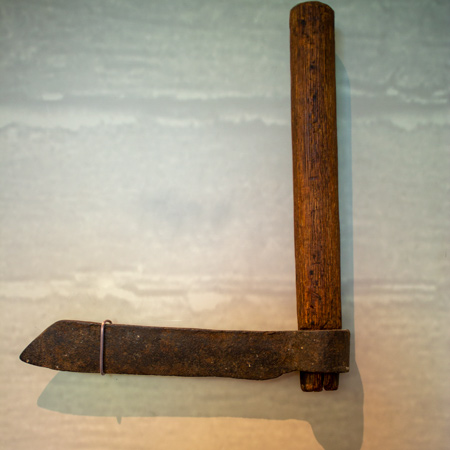

Sgt. Ordway is hopeful that their cottonwood logs will rive well—split into boards. He reports that they will have to give up on that plan. Traders from Canada arrive at the Hidatsa villages.
November 25, 1804
Hidatsa mix-up
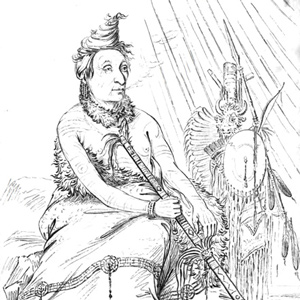

Lewis, interpreters Jusseaume and Charbonneau, and five men embark on a diplomatic mission to a Hidatsa village. Two Hidatsa chiefs—Black Moccasin and Rd Shield—come to Fort Mandan with similar intentions.
November 28, 1804
Black Cat's medals
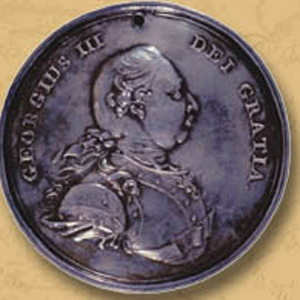

On this snowy day at Fort Mandan, Posecopsahe—Black Cat—comes to see the American “Curiossities.” He is told to no longer accept peace medals or flags from trader François-Antoine Larocque.
December 4, 1804
Jusseaume's discontent
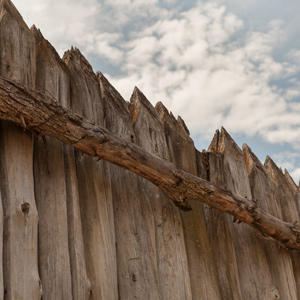

At Fort Mandan, the main bastion is completed. Posecopsahe (Black Cat) and two chiefs visit, and Clark reports that interpreter René Jusseaume is assuming and discontented.
December 18, 1804
Clark's Fort Mandan maps
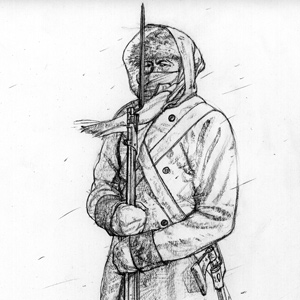

Three visiting fur traders leave Fort Mandan, and Clark updates his maps using the geographic information obtained from them. Due to the cold, guard duty is shortened, and a bison hunt is canceled.
January 1, 1805
A new year at Fort Mandan


At Fort Mandan, New Year’s Day starts with rain and cannon fire. Several enlisted men are allowed to visit a nearby Mandan village, and Clark orders York to dance for them. The day ends snowy and cold.
January 24, 1805
Wood for charcoal
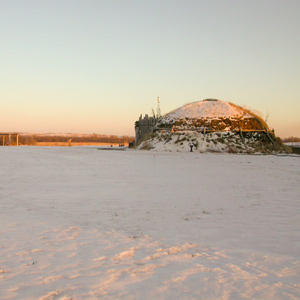

At Fort Mandan below the Knife River Villages, the two interpreters appear to have reconciled, hunters return empty-handed, and men cut wood to make charcoal for the blacksmith’s forge.
January 28, 1805
Ellicott's artificial horizon
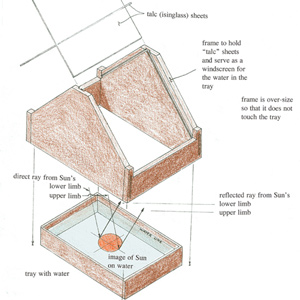

The weather is so cold at Fort Mandan among the Knife River Villages that Lewis must substitute spirituous liquor for water to make an artificial horizon for his sextant. The boats are trapped in ice.
February 2, 1805
Mr. Larocque's compass
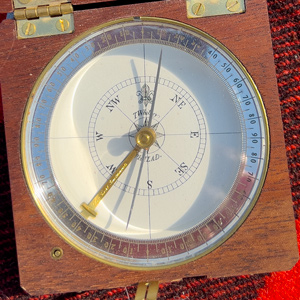

At Fort Mandan, Lewis fixes North West Company trader François-Antoine Larocque’s compass, but latter’s attempt to join the expedition fails. One of the interpreters’ wives—perhaps Sacagawea—is taken ill.
February 24, 1805
Freeing the boats
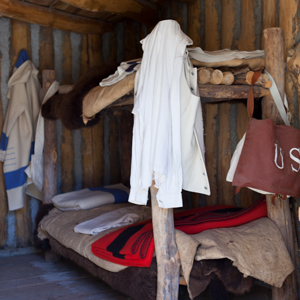
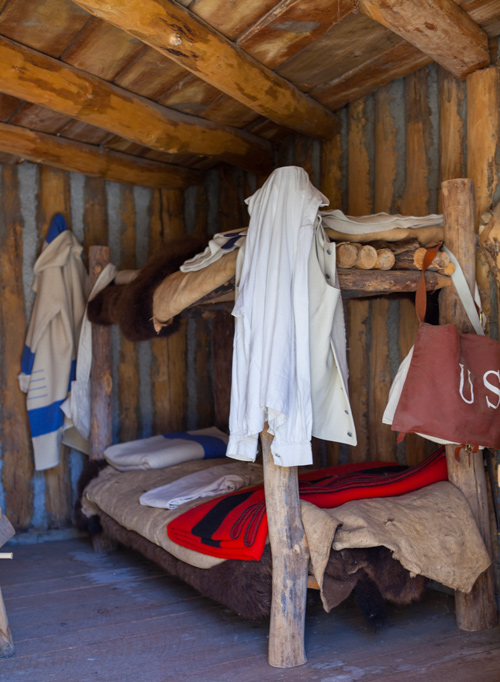
At Fort Mandan north of present Bismarck, North Dakota, the enlisted men free the barge and red pirogue from the grip of the Missouri River ice. Interpreter René Jusseaume and his family return.
March 22, 1805
Man Wolf Chief visits
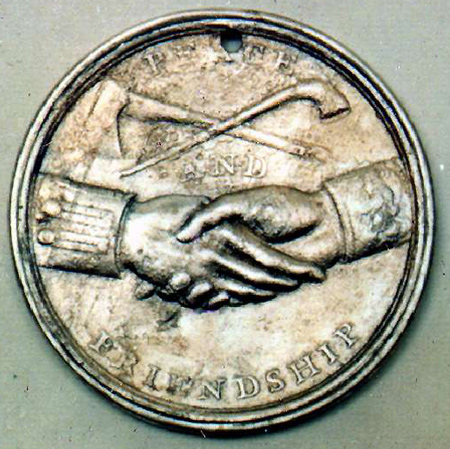

At Fort Mandan, Man Wolf Chief of Menetarra is given the standard diplomatic treatment: an Indian peace medal, gifts, and a speech. Engagé François Rivet comes for his canoe.
August 14, 1806
Among old friends
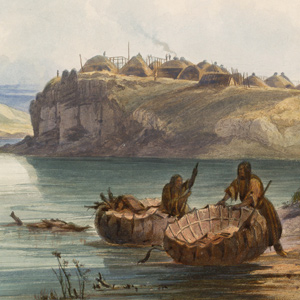

The expedition arrives at the Knife River Villages—one of which is the home of the Charbonneau family. The captains meet with various chiefs, and Clark invites them to travel to Washington City.
August 16, 1806
Parting gifts


At the Knife River Villages, a village gifts more corn than the boats can carry. A swivel gun is given to a Hidatsa chief and the blacksmith tools to Charbonneau. Sheheke agrees to go to Washington City.
August 17, 1806
An offer to raise Jean Baptiste
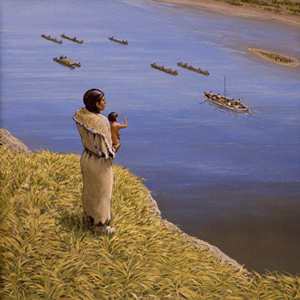

The expedition leaves the Knife River Villages without Pvt. Colter and the Charbonneau family. Clark encourages the Charbonneaus to come to St. Louis where he can arrange the education of Jean Baptiste.
August 19, 1806
Jusseaume's leather lodge
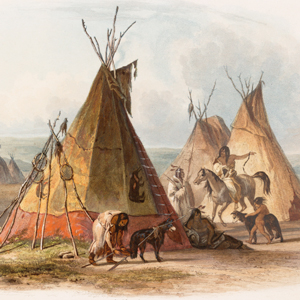

Due to high winds, they make only ten miles down the Missouri. At evening camp near present Huff, North Dakota, interpreter René Jusseaume offers Clark space in his leather lodge.
August 28, 1806
A day at Pleasant Camp


The expedition arrives at an old camp—known as Pleasant or Plum Camp—below present Oacoma, South Dakota. They collect zoological specimens, make leather for new clothes, and pick plums.
Experience the Lewis and Clark Trail
The Lewis and Clark Trail Experience—our sister site at lewisandclark.travel—connects the world to people and places on the Lewis and Clark Trail.
Discover More
- The Lewis and Clark Expedition: Day by Day by Gary E. Moulton (University of Nebraska Press, 2018). The story in prose, 14 May 1804–23 September 1806.
- The Lewis and Clark Journals: An American Epic of Discovery (abridged) by Gary E. Moulton (University of Nebraska Press, 2003). Selected journal excerpts, 14 May 1804–23 September 1806.
- The Lewis and Clark Journals. by Gary E. Moulton (University of Nebraska Press, 1983–2001). The complete story in 13 volumes.

